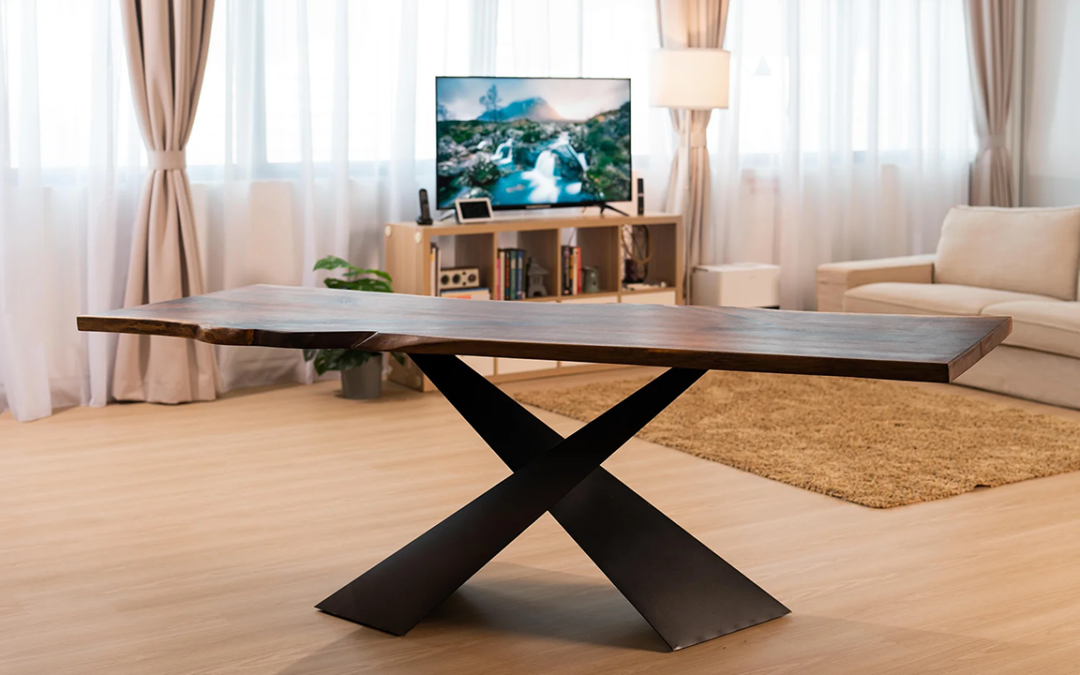The Ultimate Guide to Picking Resilient Dining Room Table Legs
The Ultimate Guide to Picking Resilient Dining Room Table Legs
Blog Article
A Thorough Check Out Table Leg Styles: Finding the Perfect Suit
Selecting the right eating table leg design is important for both aesthetic allure and functional performance. Conventional 4 legs use timeless elegance and security, while the pedestal base offers boosted legroom and a contemporary look. For those with bigger tables, trestle legs make certain strong support, whereas barrette legs introduce a mid-century modern ambiance with their minimalist design. The x-shaped legs mix contemporary design with enhanced security. Each of these options brings one-of-a-kind advantages, making the selection greater than just an issue of choice. Check out further to find which style completely complements your dining room and way of life.
Traditional Four Legs
Among the various kinds of eating table leg designs, the standard four-leg style stays a timeless choice for many households. 4 legs supply well balanced support, making certain the table continues to be steady and qualified of birthing significant weight (dining room table legs).
From an aesthetic viewpoint, the typical four-leg layout can be quickly adapted to various indoor designs. Whether crafted from wood, steel, or a mix of materials, these legs can be intricately sculpted, smooth and minimalistic, or anything in between. Their versatility permits them to match both rustic and contemporary setups flawlessly.
Additionally, the straightforward framework of the four-leg style helps with convenience of motion and placement within an area. Unlike more complex bases, this design minimizes blockages, offering ample legroom for restaurants. In summary, the standard four-leg table leg design marries sustaining beauty with practical performance, making it an astute selection for those seeking both kind and function in their eating furnishings.
Pedestal Base
Typically commemorated for its stylish and space-efficient layout, the pedestal base is a notable alternative to the typical four-leg configuration in table leg styles. This unique base commonly features a solitary main column supporting the table top, which can differ in form, from ornately sculpted timber to sleek, contemporary steel. One of the main benefits of the pedestal base is its capability to take full advantage of legroom and seating adaptability. Without corner legs, restaurants are managed greater flexibility of activity, making it a perfect option for round and oblong tables that advertise more intimate and inclusive celebrations.
In addition, the stand base's central support can deal with considerable weight, enabling using larger table tops, such as marble or thick wood. This toughness paired with its aesthetic convenience makes the stand base a preferred selection in both traditional and contemporary indoor setups. It can flawlessly incorporate with numerous layout styles, from traditional sophistication to minimalist modernity. Additionally, the central column itself provides a canvas for elaborate designs and artistic expressions, including a component of aesthetic rate of interest below the table. In summary, the stand base integrates performance with style, making it a refined and sensible choice for diverse eating atmospheres.
Trestle Legs
Trestle legs give a robust and timeless structure for dining tables, defined by their horizontal cross-bracing and tough support light beams. Originating from middle ages times, this style has actually developed yet retained its crucial structure, making it a seasonal favorite in both typical and contemporary setups. The central trestle beam of light, often sustained by 2 or more upright messages, uses extraordinary security, enabling bigger table lengths without the need for added legs.
A substantial advantage of trestle leg tables is the enough legroom they provide. Unlike tables with 4 edge legs, the absence of blockages at the table's sides offers unobstructed space for chairs and diners, improving convenience and ease of access. This makes trestle tables excellent for accommodating larger celebrations, whether in a dining-room or a reception hall.
The visual versatility of trestle legs is notable. Readily available in a selection of materials such as wood, metal, and composite, they can be completed to enhance a vast array of interior designs. From rustic farmhouse to smooth modern-day designs, trestle legs can be customized to suit private preferences. Their long-lasting allure and useful advantages make trestle legs an engaging choice for those seeking both style and practicality in their table.
Hairpin Legs

The appeal of hairpin legs depends on their simpleness and flexibility - dining room table legs. Readily available in a variety of materials, consisting of steel and brass, they can be ended up in various colors to enhance various indoor styles. Whether matched with a rustic wood table top or a contemporary glass surface, barrette legs easily blend performance with a touch of vintage charm
Durability is one more significant attribute of hairpin legs. Despite their delicate appearance, these legs are crafted to birth significant weight, ensuring the dining table stays steady and safe and secure. In addition, they are relatively easy to install, making them a prominent choice for DIY enthusiasts and professional furniture makers alike.
X-Shaped Legs

Constructed from products such as steel, wood, or a combination of both, X-shaped Web Site legs can be customized to match various style choices. Steel legs typically offer a sleek and commercial Website feeling, ideal for loft-style homes and modern dining rooms. On the various other hand, wooden X-shaped legs use a warmer, more rustic charm, appropriate for farmhouse or diverse interiors. The flexibility in products permits property owners to personalize their eating tables to better fit their overall style system.
In addition, the engineering behind X-shaped legs ensures even weight distribution, lessening the danger of tottering and boosting durability. This makes them particularly well-suited for larger table that require additional support. Basically, X-shaped legs blend useful engineering with modern aesthetic appeals, making them an ageless selection for diverse eating environments.
Conclusion
An extensive understanding of dining table leg designs exposes the distinctive attributes and benefits of each layout. Trestle legs make sure robust assistance for larger tables, and hairpin legs present a mid-century modern visual.
Report this page